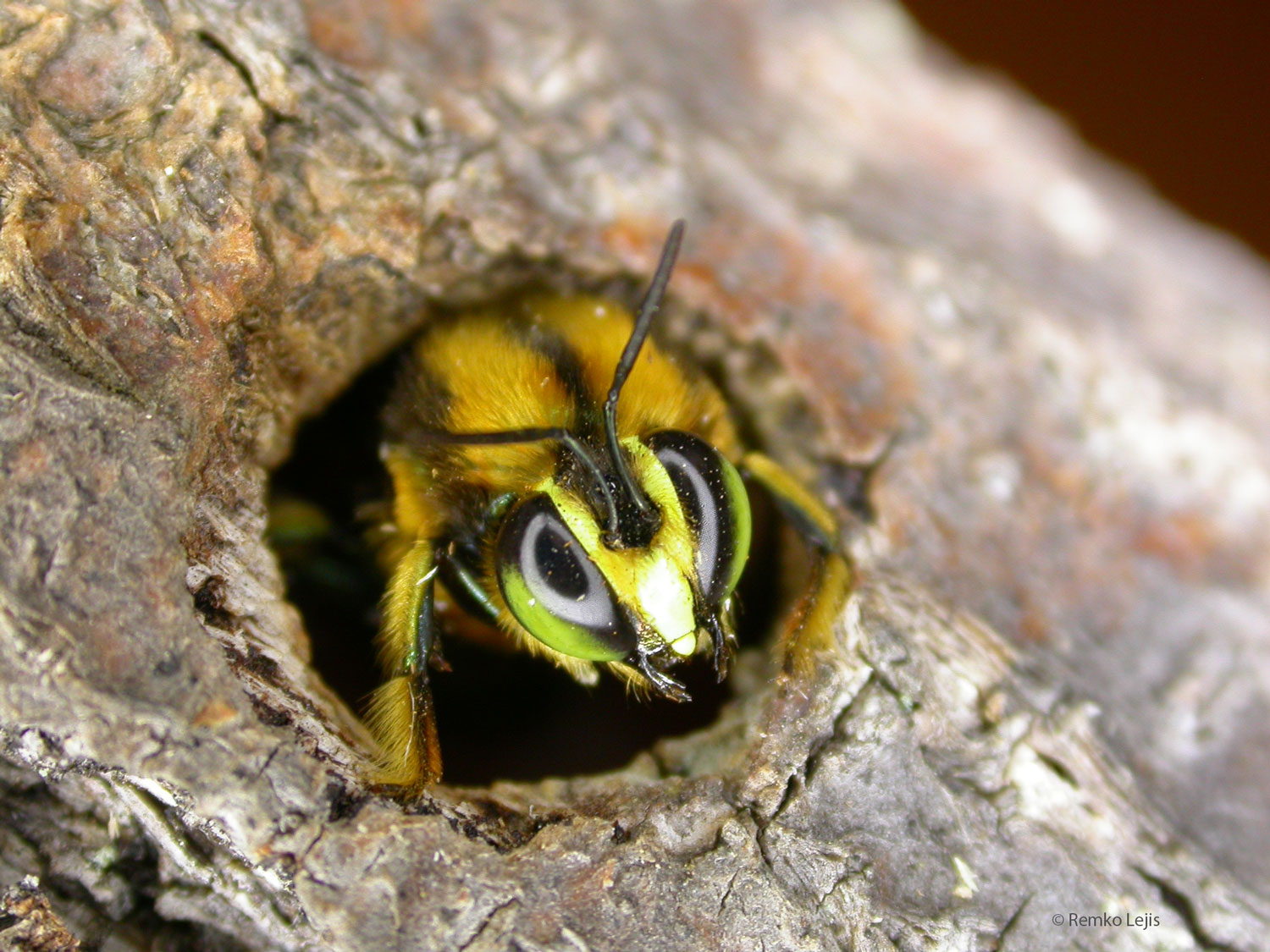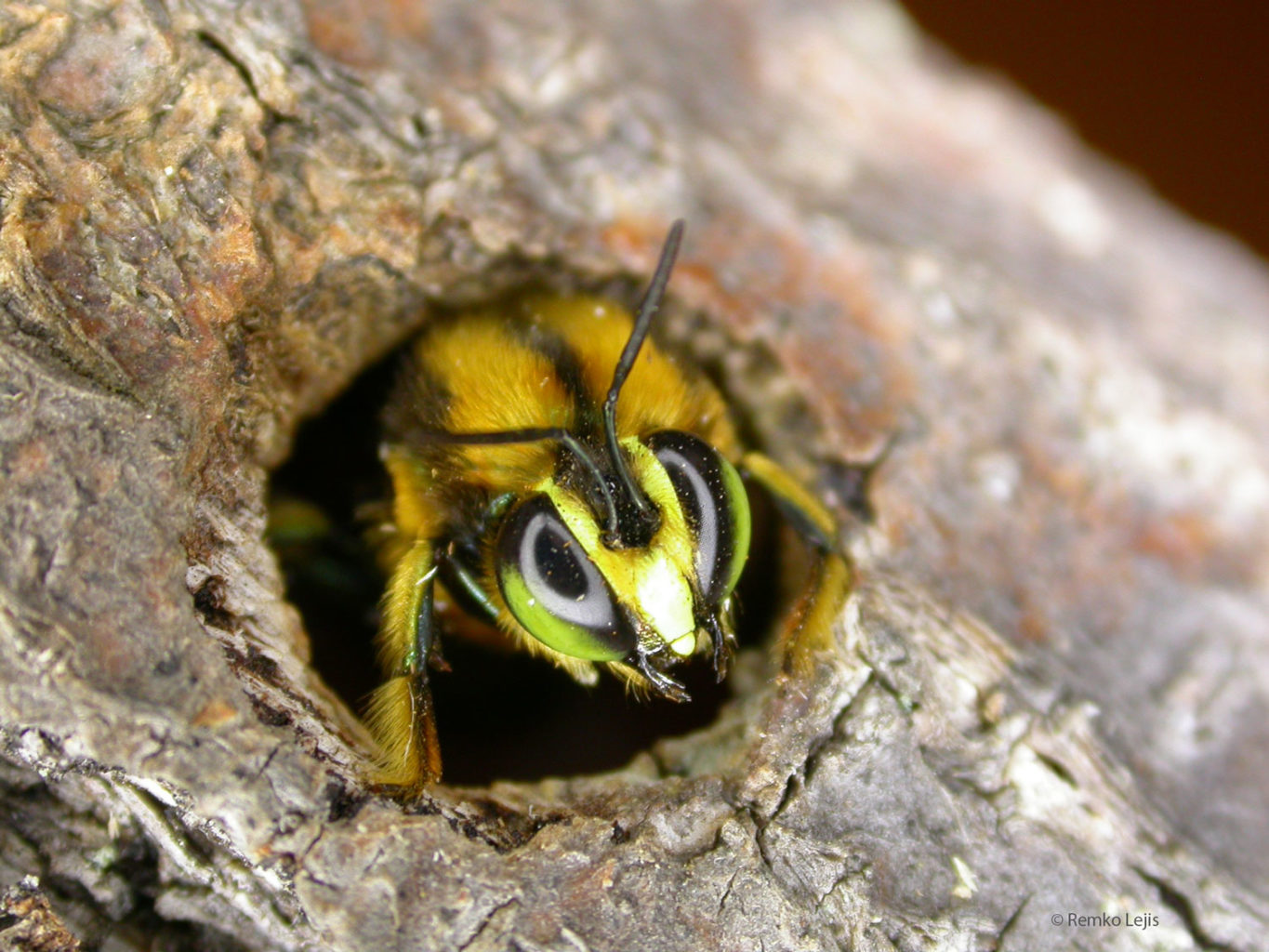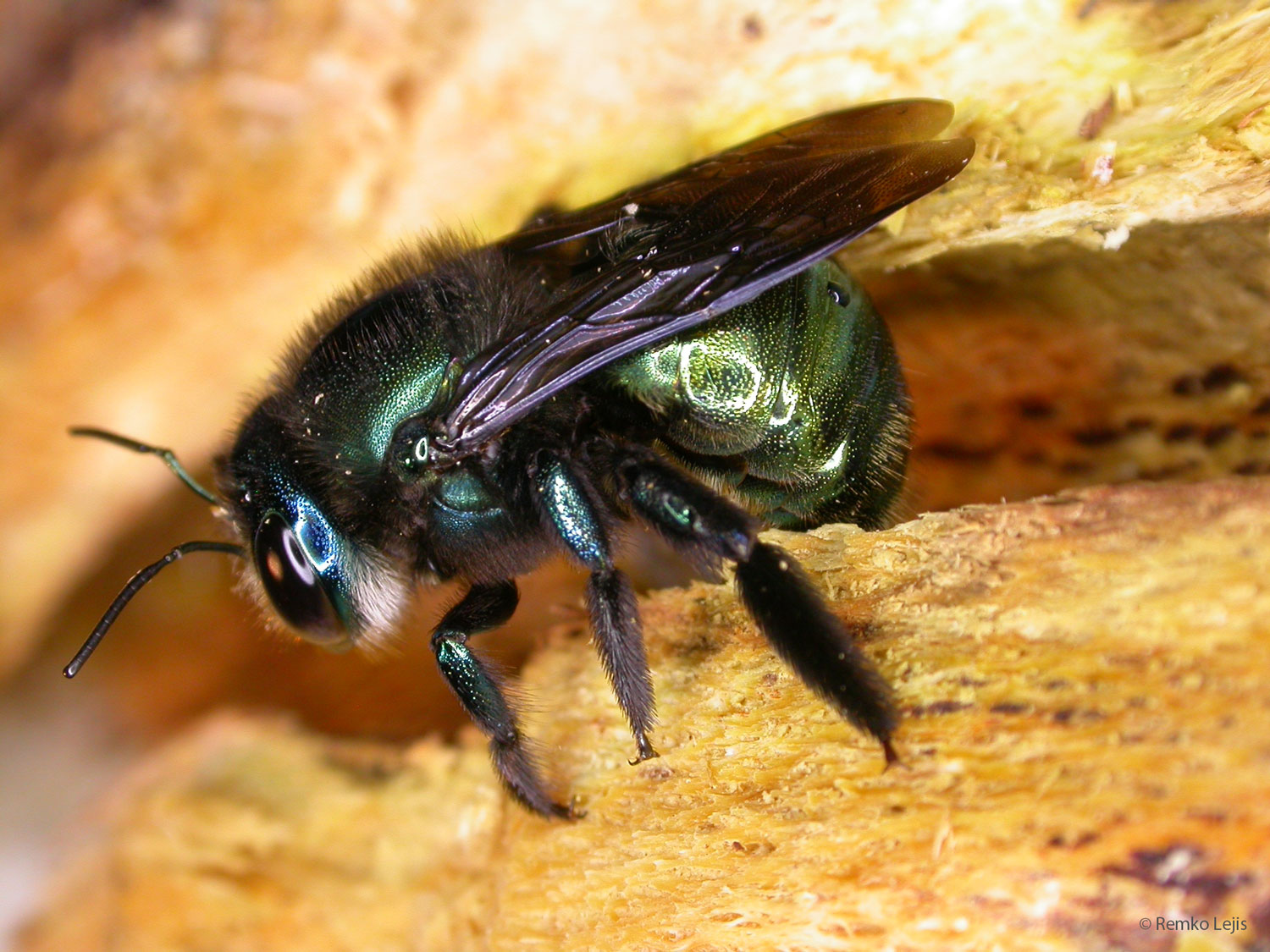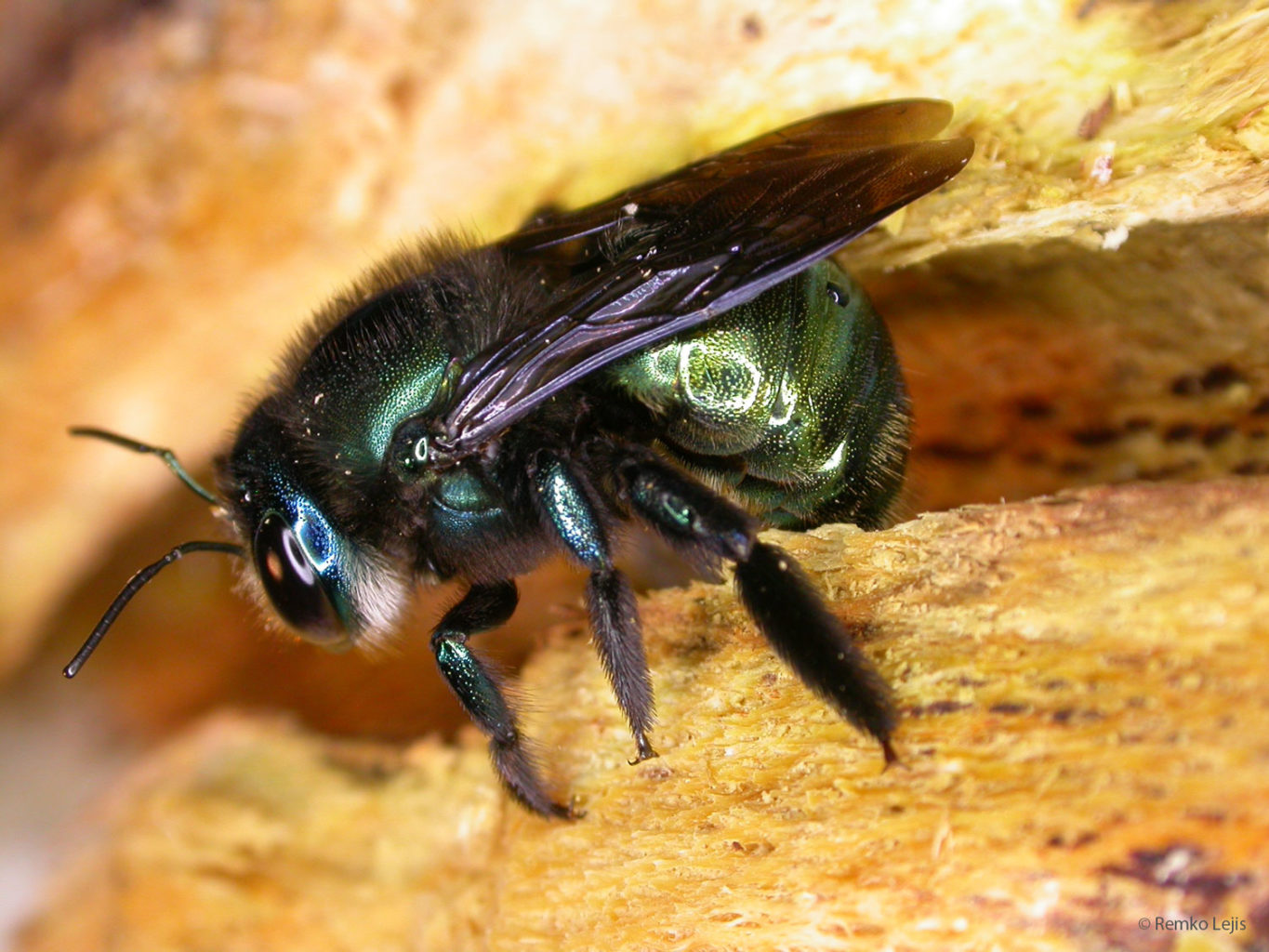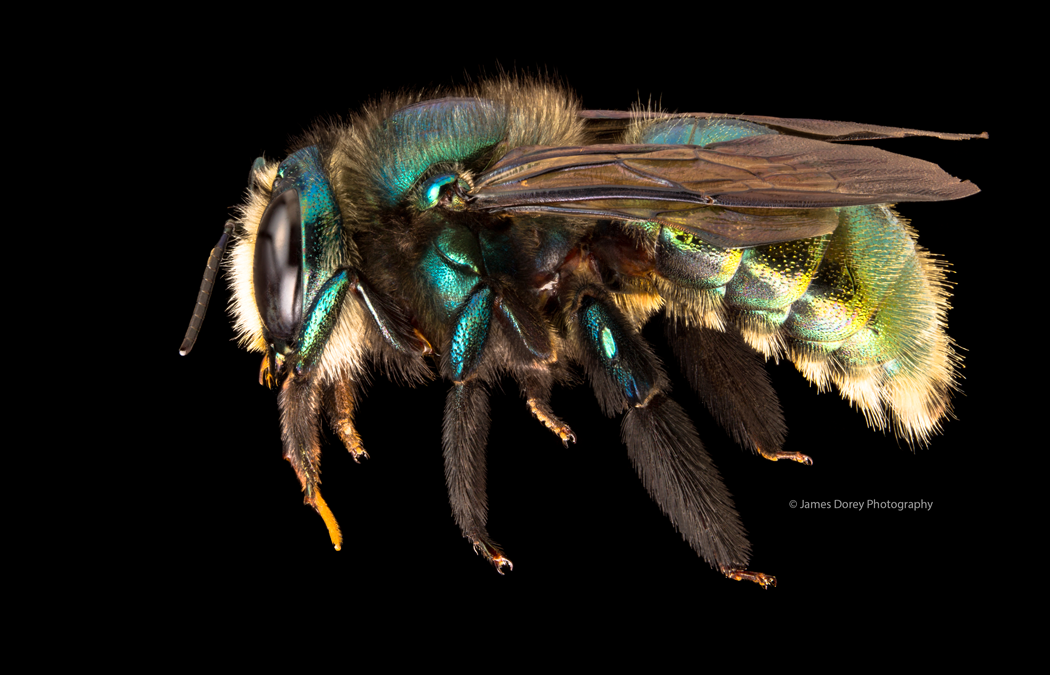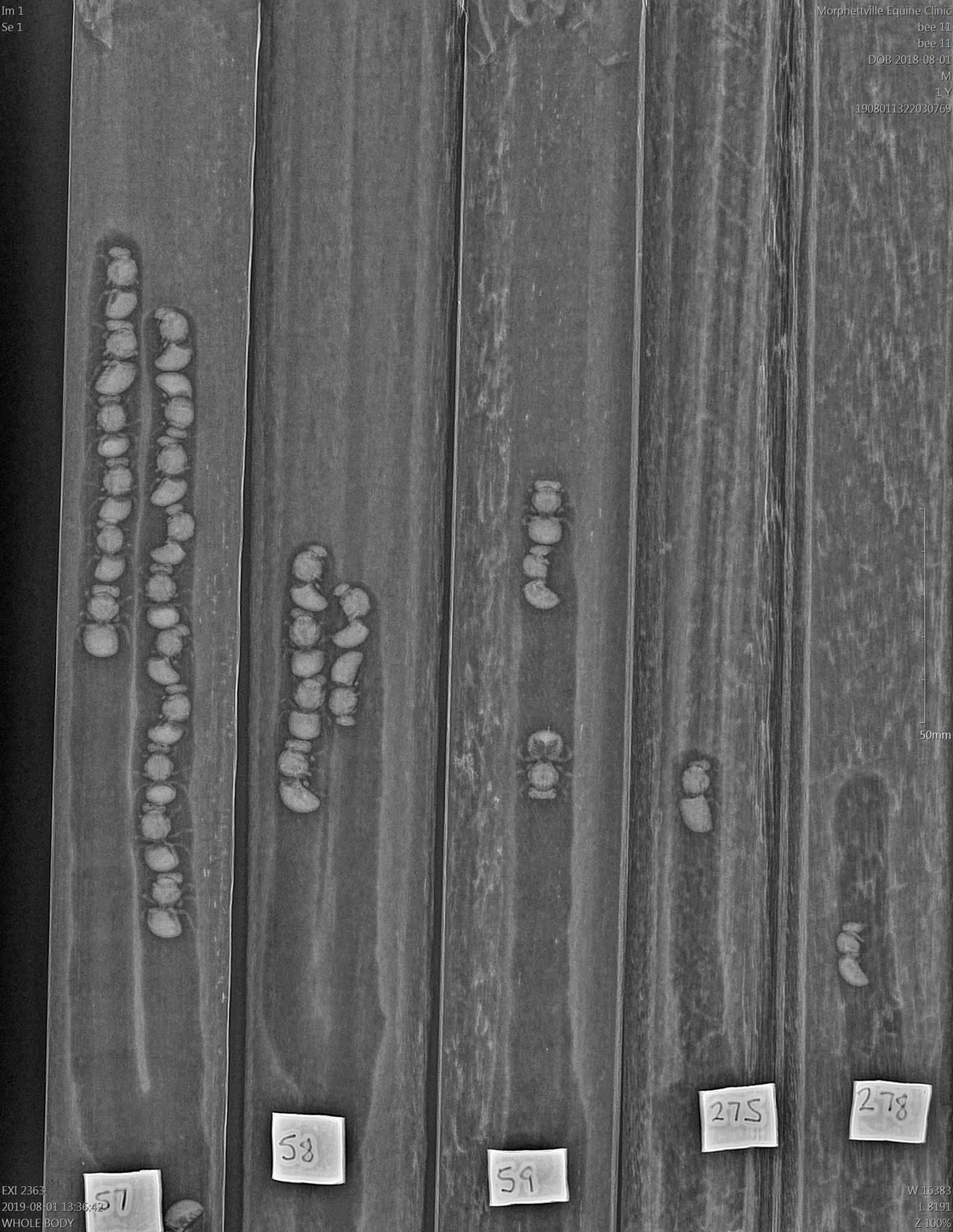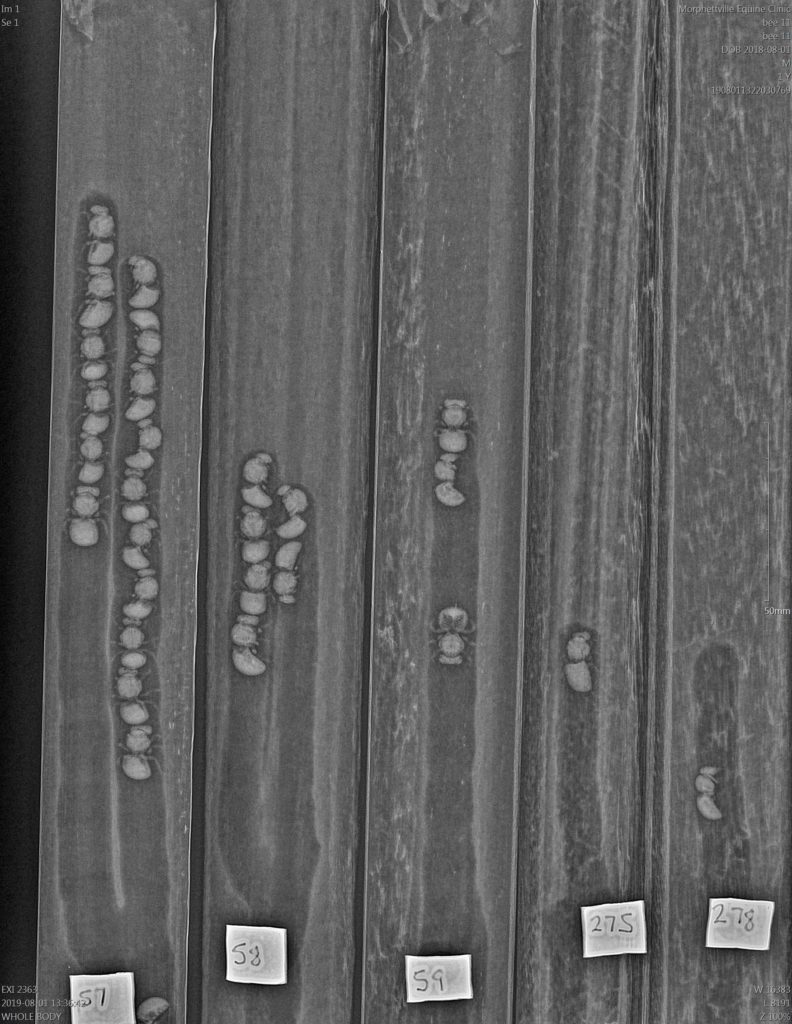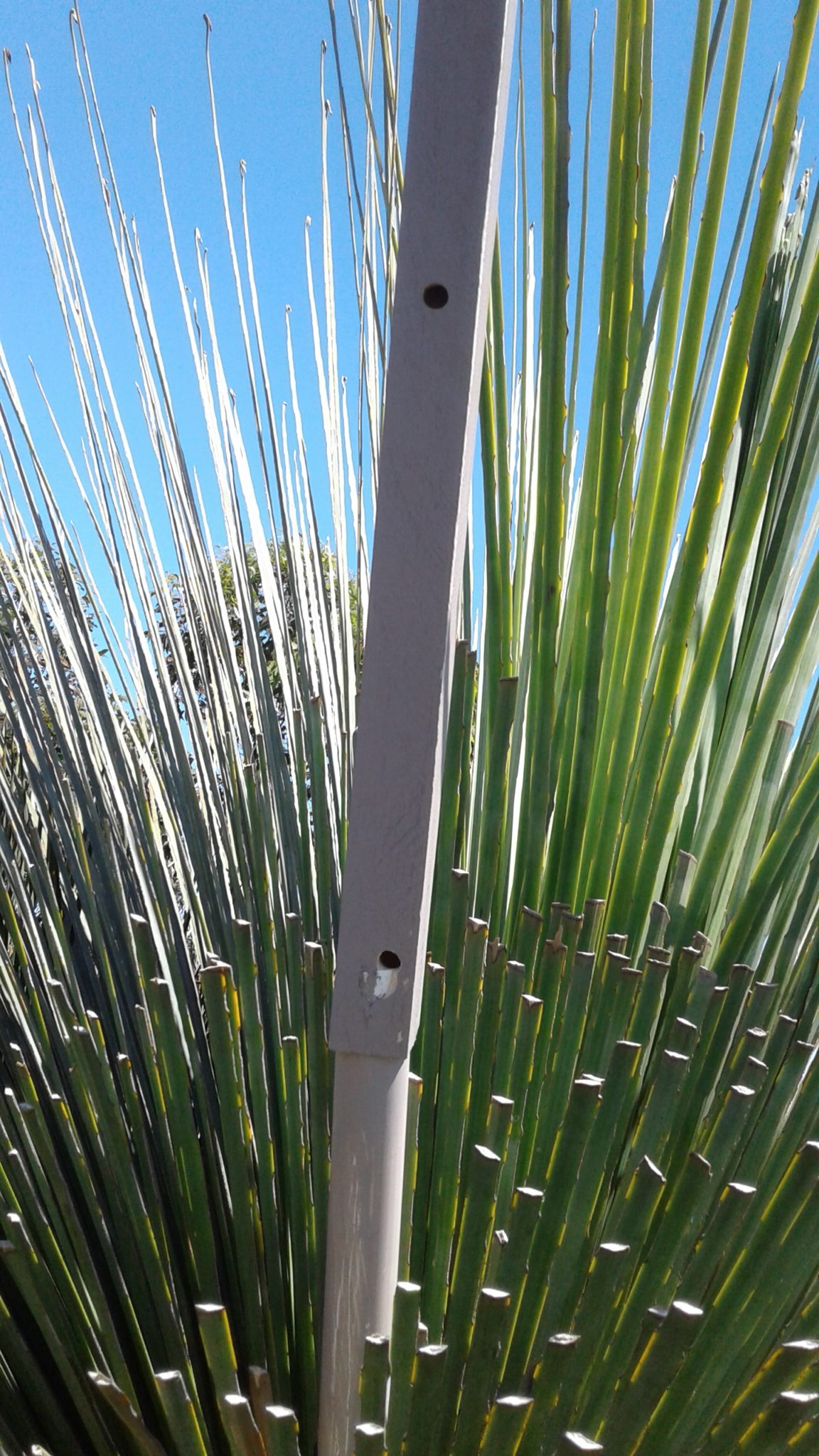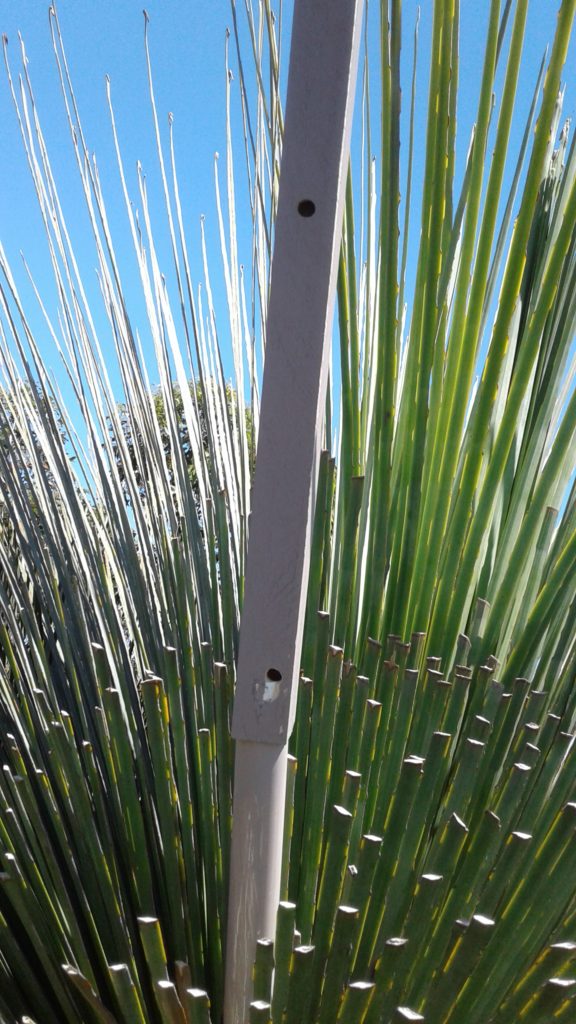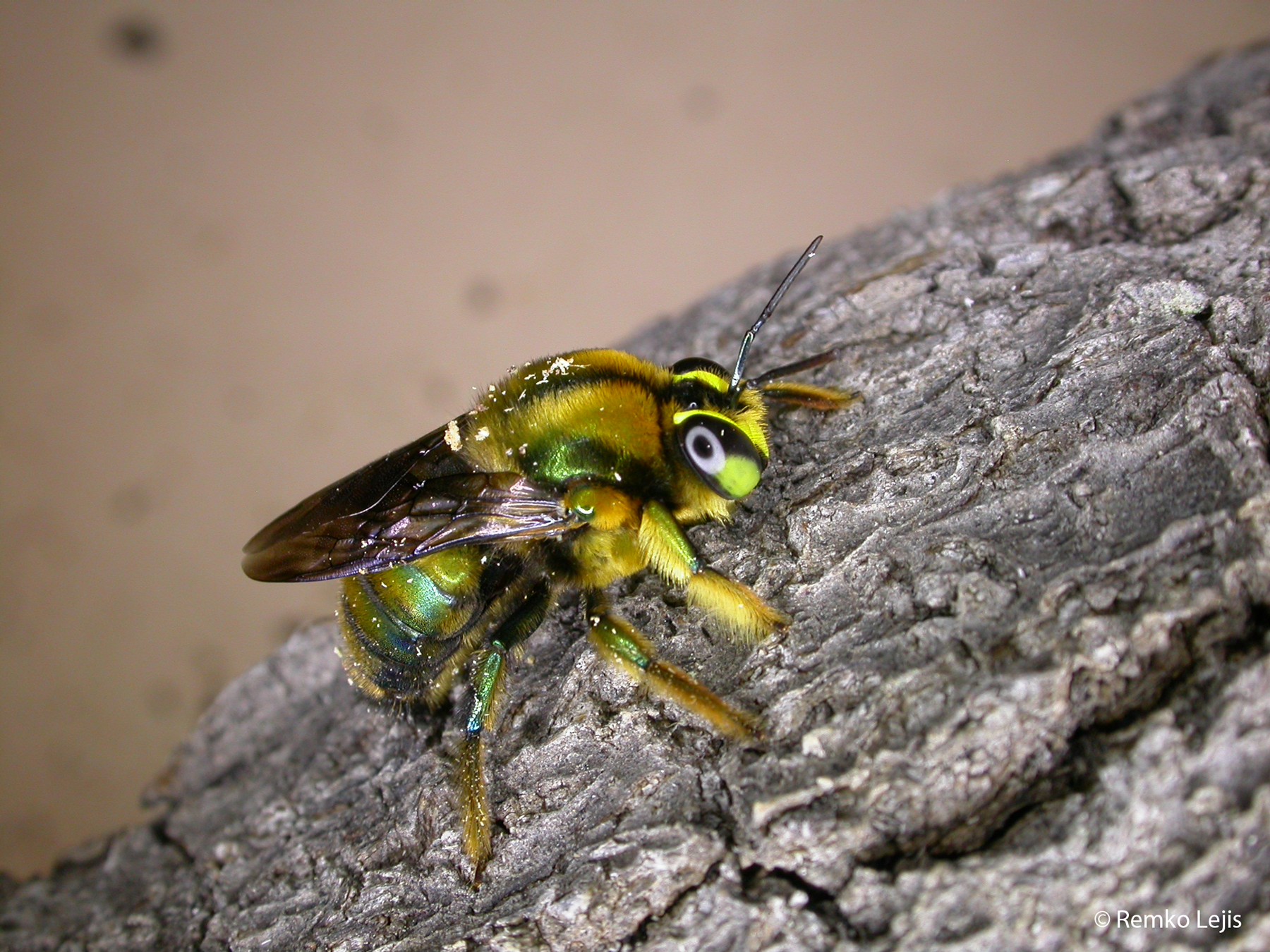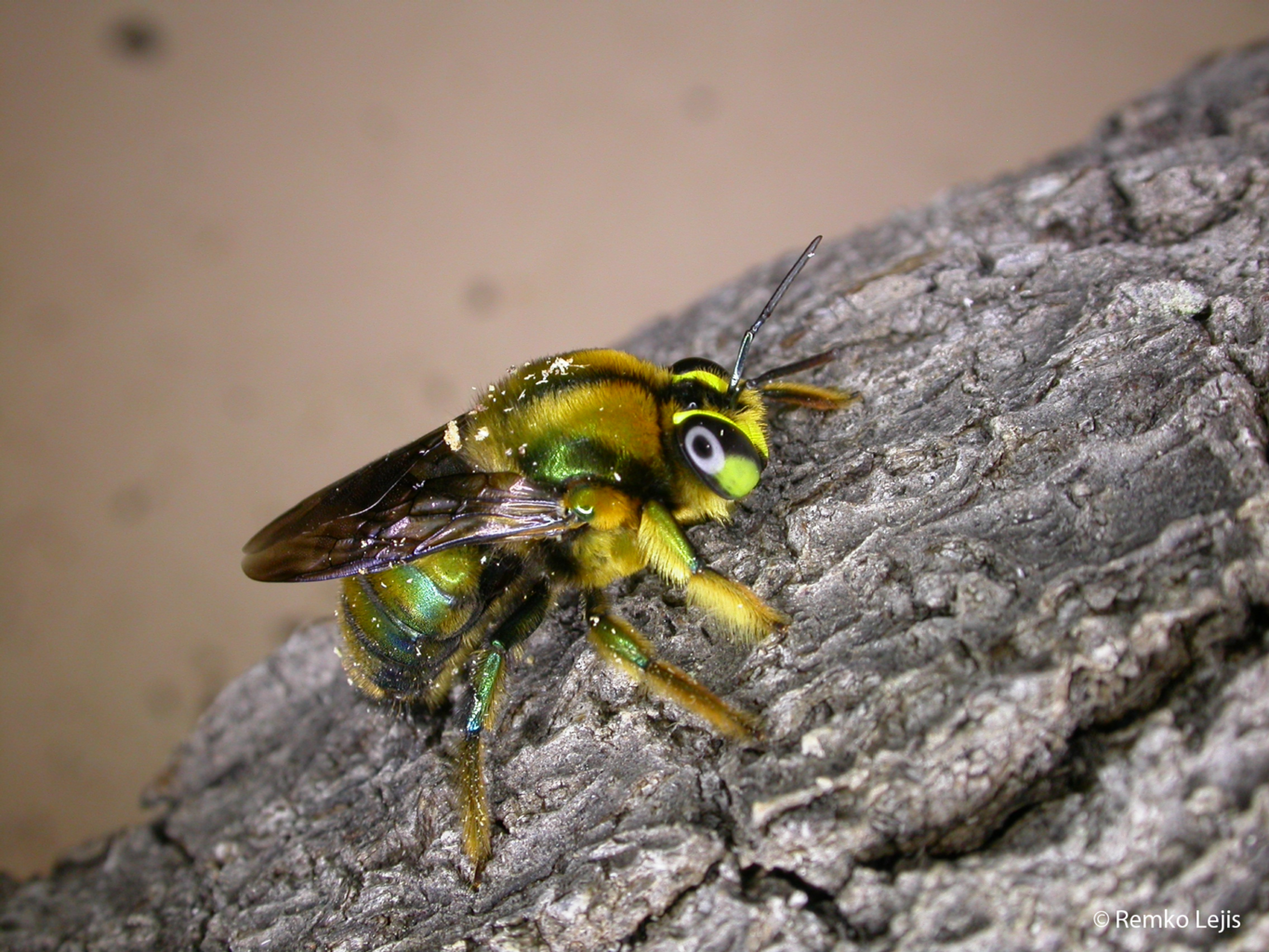In early 2020, the worst bushfires in history tore across Australia, causing unprecedented destruction. Prompted by images of injured or dead koalas and kangaroos, support poured in from people around the world. At the same time, some lesser-known species face an even greater threat.
One such species is the green carpenter bee. Even before the fires, these once abundant shimmering green and gold bees had already lost most of their historic habitat. The only populations left were on Kangaroo Island and in New South Wales—and the bushfires devastated both areas.
On Kangaroo Island, the fires destroyed most of the trees that the bees nest in, such as banksia and yacca. (Unlike bees that nest in groups, the solitary green carpenter bee burrows into soft wood to make its nest.) Without a place to nest, the species is in danger of rapid extinction.
Working with the Australian conservation group the Wheen Bee Foundation, Seacology is providing a critical lifeline for these native bees. We are funding hundreds of artificial nests, which our project partner will place in key areas on Kangaroo Island. They will provide crucial nesting habitat for the carpenter bees while the trees grow back.
This project will fund enough nests for the next three years. This is a critical period that will make or break the future of the species.
We raised money for this project with our Earth Day 2020 crowdfunding campaign. We are deeply grateful to those who, in such a difficult time, pitched in to save a species from extinction!


